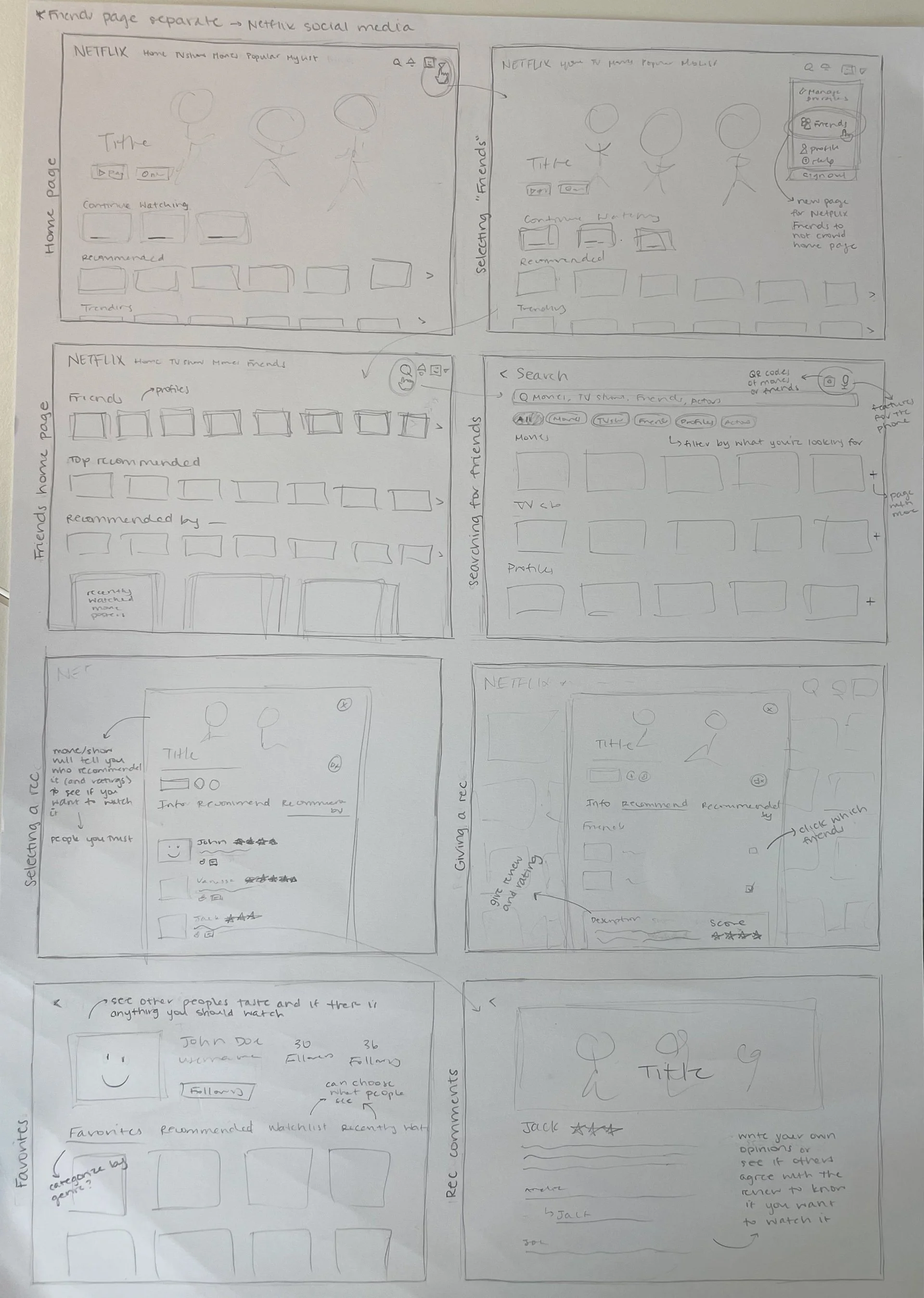NETFLIX
UX Research & Design
Overview
During my summer 2023 internship at Deltatre in London, UK, I was tasked with designing the future of streaming apps. Over eight weeks, I followed the typical UX research process to tackle a critical challenge: how to make Netflix stand out in an increasingly competitive streaming market while addressing user pain points and evolving the platform's experience. This case study explores how I identified and solved these challenges, emphasizing why addressing them is vital for Netflix’s long-term success as a leader in the industry.
Final Mobile Prototype - Figma
Introduction and Problem Definition
The project began by focusing on understanding the core challenges within the streaming industry. I studied basic UX principles, completed market research, and conducted a competitive analysis of Netflix and Disney+. My goal was to identify user needs, wants, and pain points, and analyze how industry shifts had impacted Netflix's profits and subscription rates.
With increasing number of competitors entering the market, it can be hard for Netflix to retain users and attract new ones. To further define the problem, I conducted a SWOT analysis and created personas representing Netflix's diverse audience. These steps led to an idea: streaming platforms can evolve beyond content delivery into interactive, social environments. By incorporating a social feature, Netflix can differentiate itself and drive engagement, making it stand out in an increasingly crowded market.
Ideation and Concept Development
With the problem defined, I sought the opinions on the Netflix app from peers, mentors, and potential users, including friends and family. This feedback informed my design direction and allowed me to refine my concepts. I also did a heuristic evaluation of the Netflix website, noting key UX issues and opportunities for improvement, and wrote problem statements that guided my next steps.
I transitioned into ideation using brainstorming techniques such as Crazy Eights. I sketched a range of solutions designed to help Netflix differentiate itself from competitors and boost subscription rates. My initial ideas focused on introducing interactive and social features to the platform, such as creating opportunities for users to connect and form communities.
Prototyping and Usability Testing
From my sketches, I selected the "friends" idea, a concept focused on enhancing Netflix's social element. My reasoning was to create a more interactive platform that could build a sense of community among users, encouraging them to stay engaged and recommend the platform to others.
I converted my wireframes into a clickable prototype using Figma, starting with a mobile design before scaling to desktop. While I had prior experience with Figma, this project allowed me to deepen my knowledge of horizontal scrolling and advanced prototyping techniques.
Usability testing with friends and family was the next step. I observed users as they completed specific tasks and gathered valuable feedback that helped me iterate on the design. This process reinforced the importance of iteration in UX design as every round of testing brought me closer to a more seamless and intuitive user experience.
Exploring Additional Tools
As the project progressed, my mentor encouraged me to explore prototyping beyond Figma. I experimented with Keynote, creating a desktop prototype using its slideshow features. While limited in functionality, this exercise demonstrated the adaptability of my design solution and provided another way to present my ideas effectively.
Conclusion and Takeaways
This project ultimately addressed several key UX challenges for Netflix: enhancing interactivity, addressing user pain points, and differentiating the platform in a competitive market. By focusing on a social, community-driven approach, I created solutions that not only met user needs but also aligned with Netflix's long-term goals.
In a broader context, solving these challenges is essential for Netflix as the streaming industry continues to evolve. Netflix is the original streaming company, but as the industry becomes more and more competitive, embracing the social element makes sure they’re best positioned for the future by fostering user loyalty and attracting new audiences.


